All the joys of medieval warfare from the comfort of your chair
Type: Singleplayer, Multiplayer
Genre: Strategy
Developer: Byzantine Games
Publisher: Slitherine Ltd.
Release date: 4 Feb, 2021


Few eras of warfare seems to be as misunderstood as that of the middle ages. The popular depiction is usually knights in well polished armour and with colourful heraldry valiantly charging across open fields into hordes of unwashed peasants, or huge siege battles with massive siege engines breaking down walls. While these things did happen on occasions, it’s not how things usually went down.
Field of Glory 2: Medieval is the latest game inspired by the Field of Glory tabletop game, a system that’s seen several videogame adaptations in recent years, including Sengoku Jidai: Shadow of the Shogun, Pike and Shot and of course past Field of Glory titles. Like past games FoG 2: Medieval is not just the board game in digital form but it’s own thing.
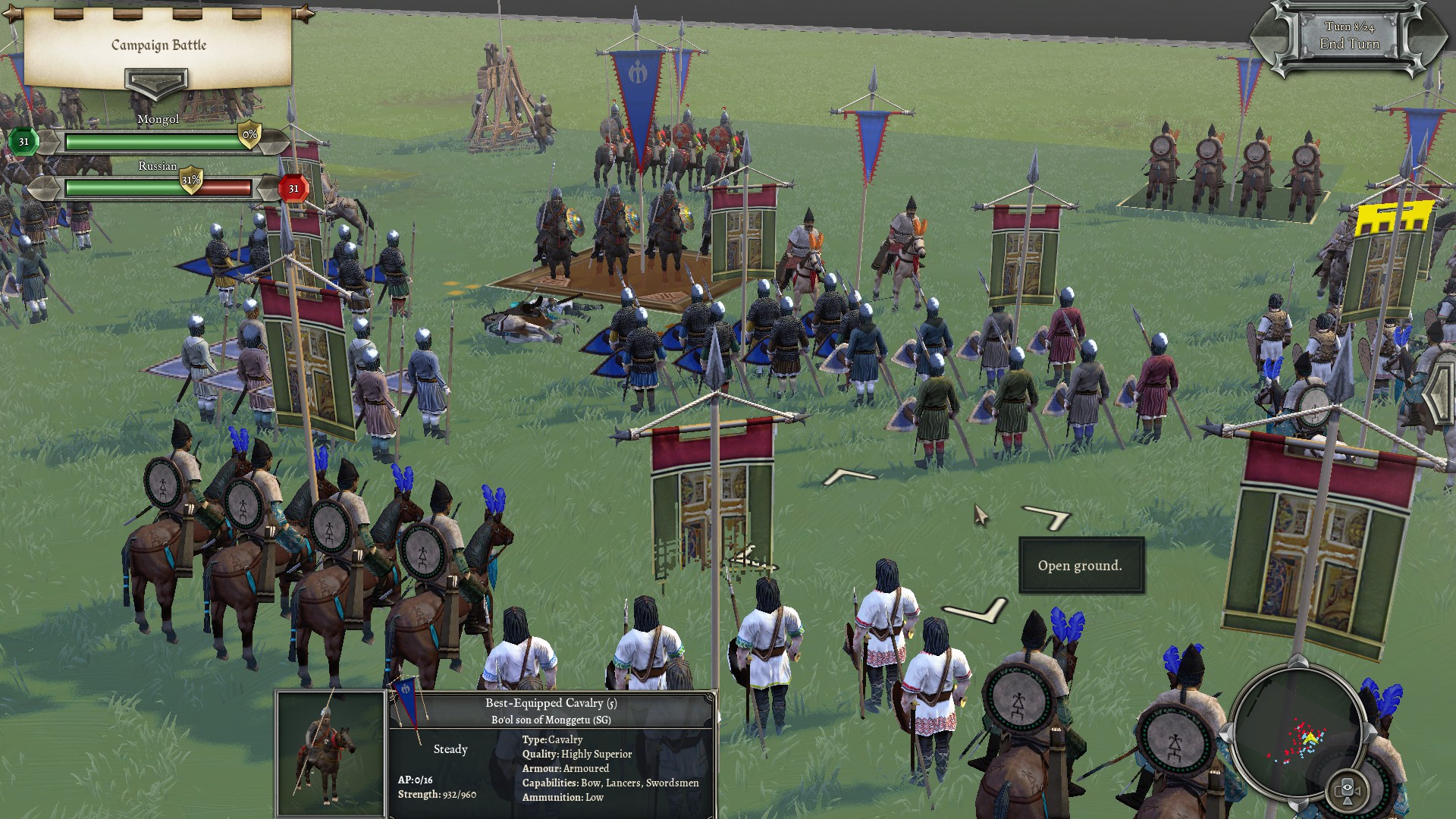
Setting
FoG 2: Medieval is set during the high middle ages of Europe, between the 11th and the 13th century, more specifically in the northern half of the continent. From Ireland and France in the west to Russian to the east. Anything south of the alps will have to wait for the inevitable DLCs.
Europe during the high middle ages was surprisingly diverse with different regions being very different from each other, and this was also reflected in the armies they fielded. The west of course had the famous French knights and the Welsh longbowmen, the north had hardy infantry the east had access to cavalry archers. This is a gross oversimplification of things, but should give a rough idea of how different the armies were. And then there’s of course the Mongols, who’s tactics was completely different from that of the European nations.
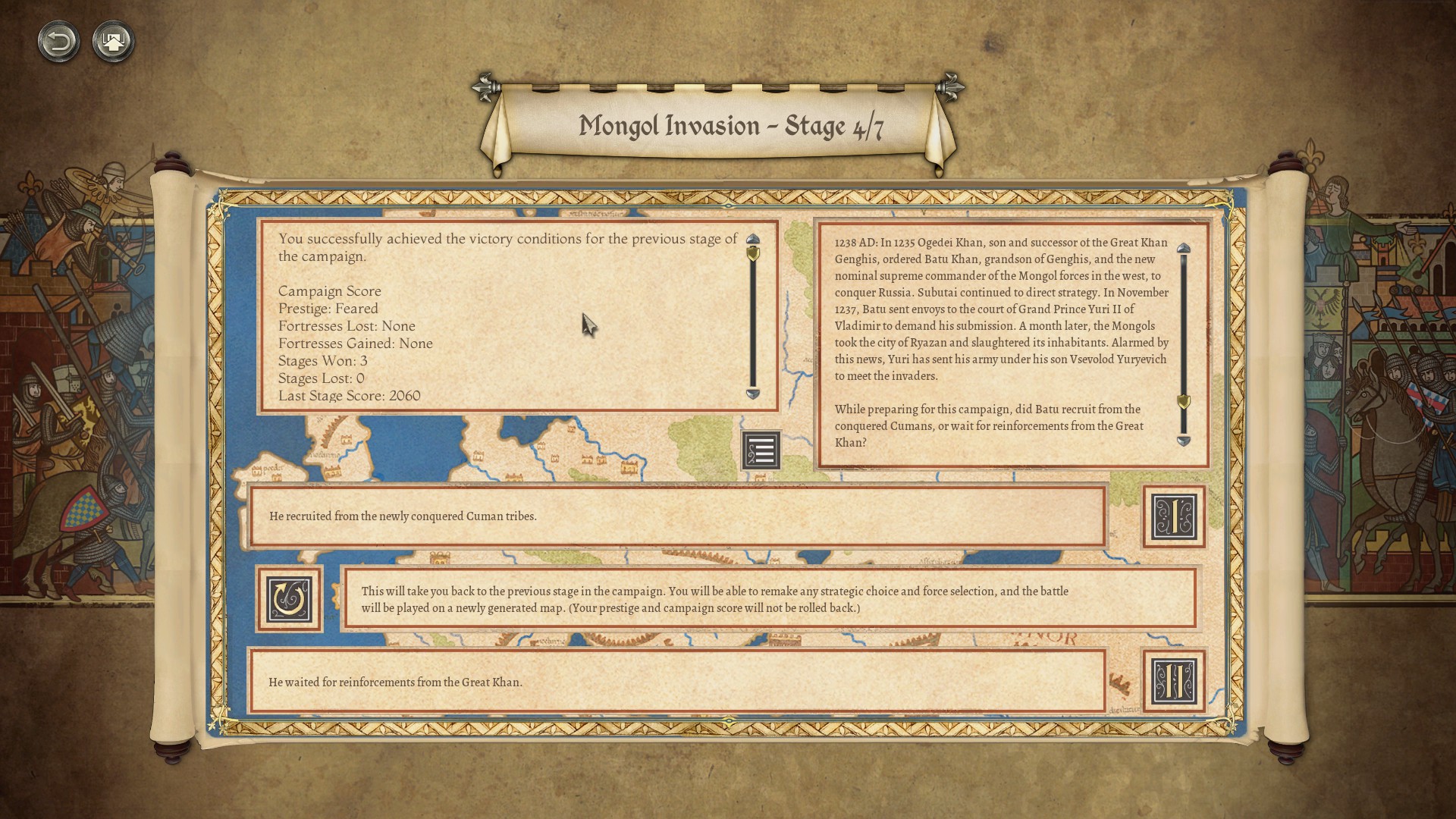
Fields of Glory 2: Medieval does a pretty good job at capturing roughly how the different armies fought during the middle ages, what their compositions would be and their overall tactics. It’s of course not a perfect simulation of everything that could happen, but when it comes to getting the overall themes right, it does a good job. A Hungarian army really does feel very different from a Swedish army which in turn feels very different from a French army. What’s less historical are some of the matchups you can have, like a Scottish army fighting against the Mongols.
There’s no overarching story in FoG 2: Medieval, but there are four campaigns. These give a bit of background for what happened historically, but they’re not digging very deep into the real world history, although anyone who’s playing a game like this is probably at least vaguely aware of what happened in the real world during these campaigns. A bit better at giving historical context are the 12 so called “epic battles”. These are historical standalone battles, and there’s a writeup for each giving context for what’s going on, as well as telling you who won in real life, and what the consequences of the battle were.
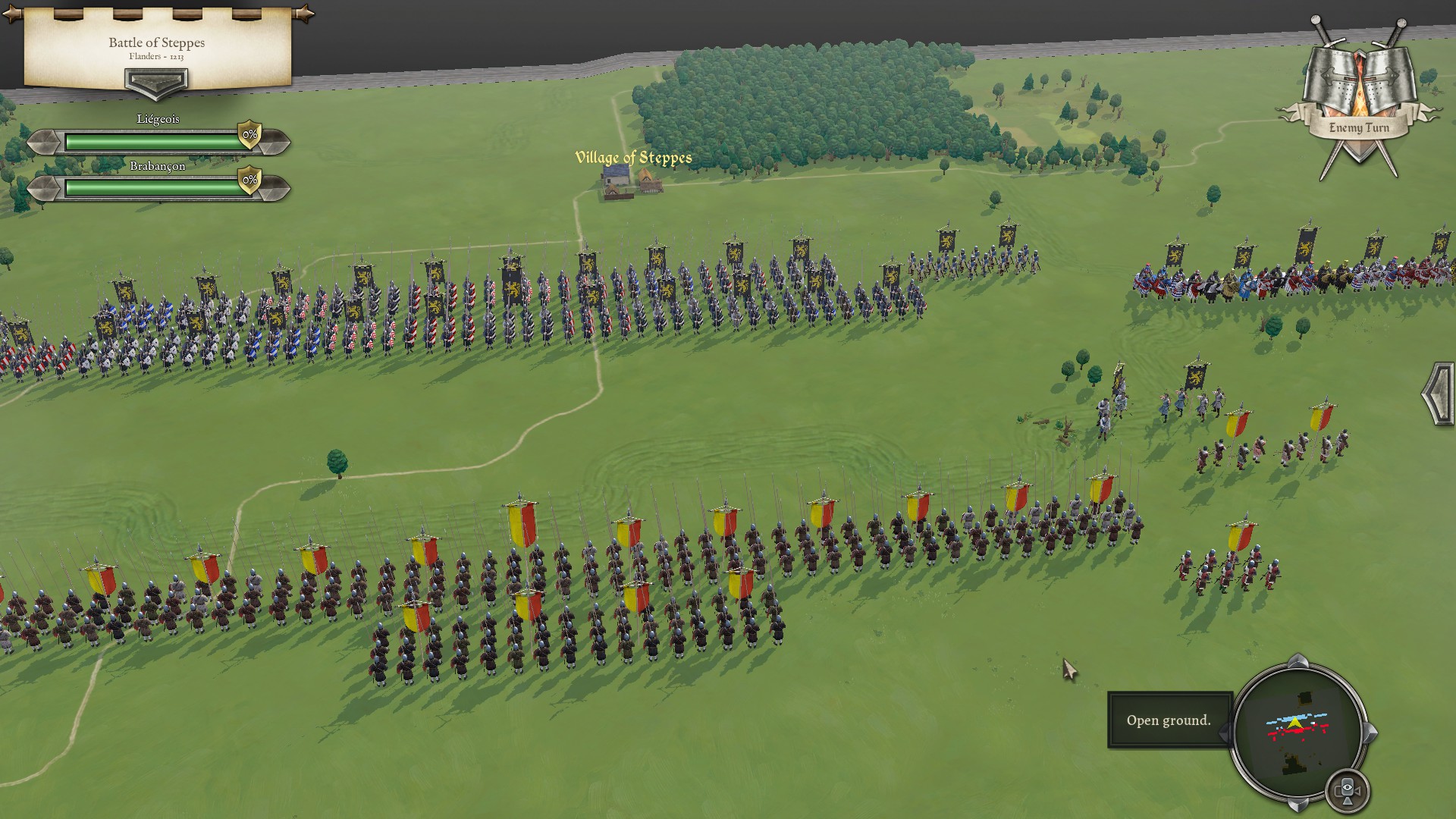
Presentation
FoG 2: Medieval has an interesting look to it. It borrows a fare bit from the tabletop game that it’s based on, with regiments of troops potentially consisting of many hundred soldiers being represented by a few models (usually between 2-12) standing close together. The individual character models are relatively realistic-looking though, with equipment that’s accurate to the time period. Each model in a unit can also be varied looking at least for some units with the most extreme being knights who have more designs than there are models in a unit and so even if you have several knight units next to each other no unit will look identical, some are a bit varied like spearment might have different coloured tunics, and huscarls might have different designs on their shields, and in some units every model is (almost) identical, so a line of them end up looking like something out of an old Asterix movie.
Animations are overall pretty stiff and can look a bit weird when units are not doing anything particular. Attacks look fine, but when units are locked in close combat it looks like they are just swaying back and forth rapidly. It’s not a great look.
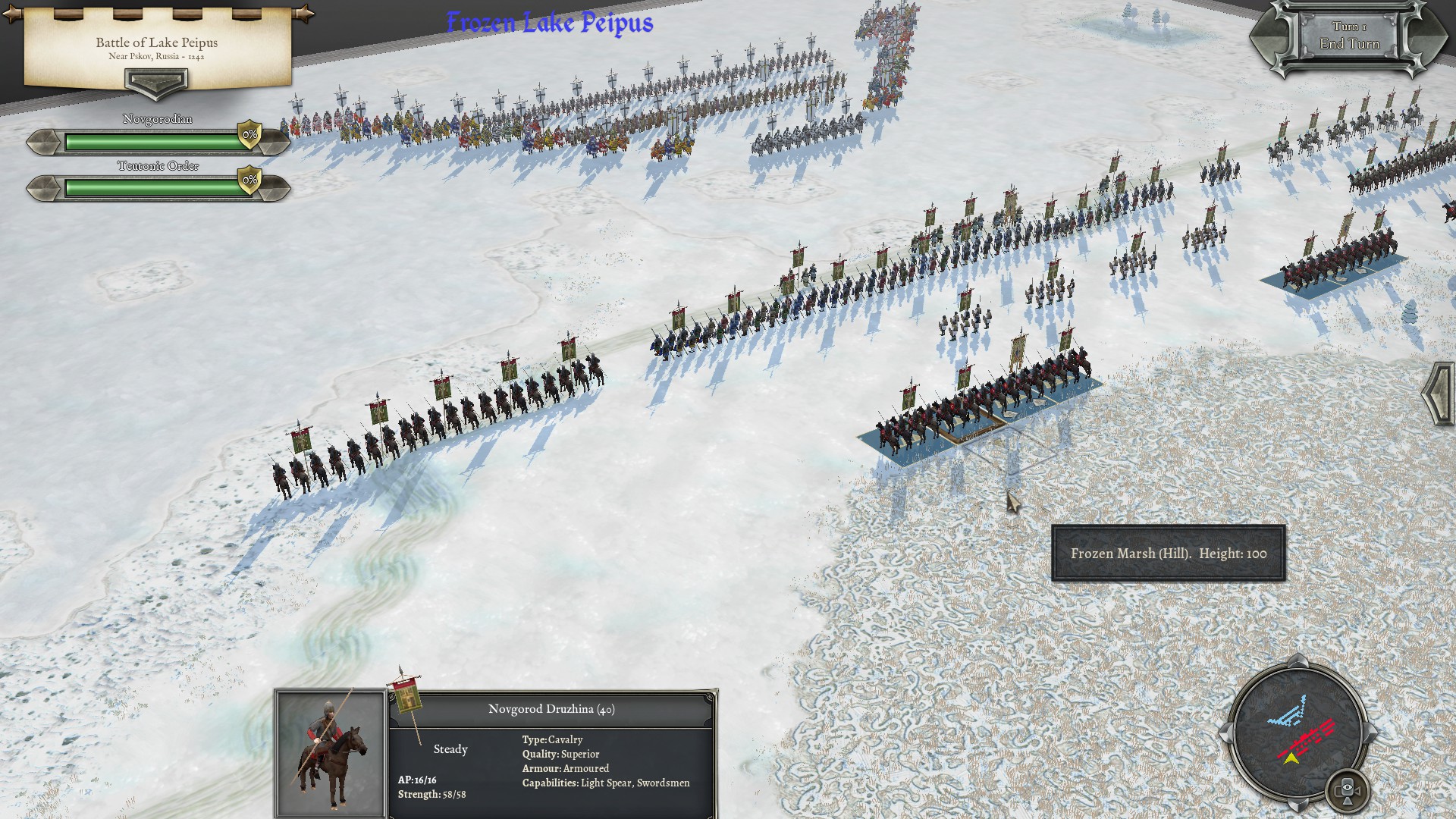
The actual playing field looks better, for the most part. The maps have an almost but not quite painted look to them, particularly the grassy maps. The trees have a somewhat stylized look to them which look pretty nice. Overall the terrain is not graphically impressive though, but it is easy to read at a glance, and it does not get in the way. You don’t need to worry about huge terrain pieces blocking any important information. All of this feels like a very intentional design choice, they’ve valued gameplay over looks.
FoG 2: Medieval is not exactly a feast for the ears either. There’s nothing really wrong with the way it sounds, but neither is it particularly impressive. The main menu theme is nice for a game like this, and it’s possible that it’s using contemporary instruments, but once you’re in a level most of the noise is just ambient noise. Birds chirping, hammers clanging against an anvil and so on (why are there so many anvils on the battlefield?). When the fighting starts you’ll hear people shouting and horses neighing and while there’s nothing wrong with any of these sound there’s nothing really special about them either.
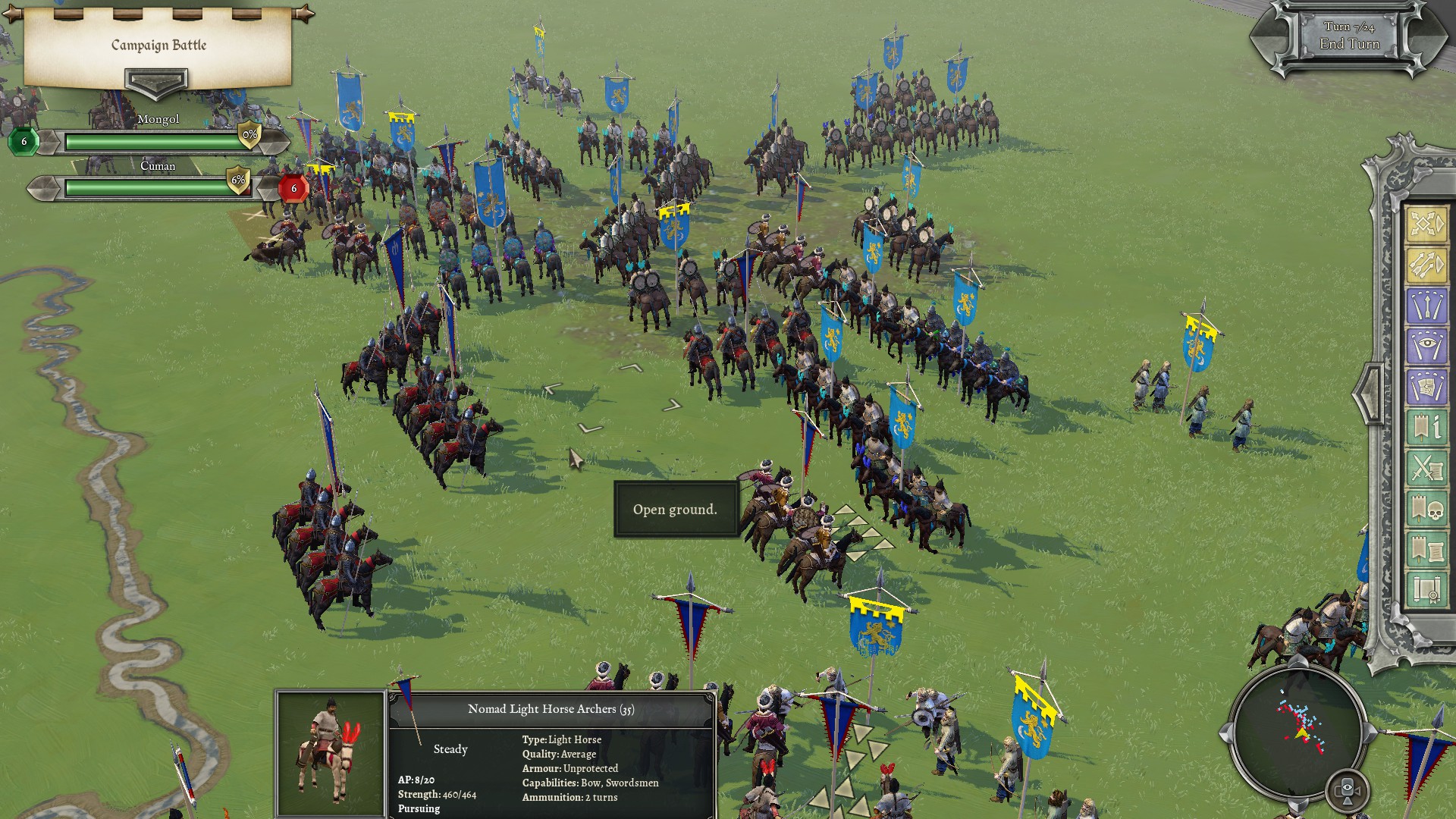
Gameplay
Without much story, and with the graphics and sound just being okay, FoG 2: Medieval better deliver in the gameplay department. And luckily it does.
Field of Glory 2: Medieval is a game that focuses entirely on the battles. You don’t need to worry about logistics, resource management or anything of that nature, this is a game about medieval armies clashing on the battlefield.
FoG 2: Medieval is a turnbased tactics game using a so called IGOUGO system, that is you make a turn, then the enemy makes a turn and you alternate until the battle is over. The goal of the game is to rout the enemy army off the battlefield, and once one side has lost enough of their units the battle ends with the winner being the one with the largest portion of their army left.
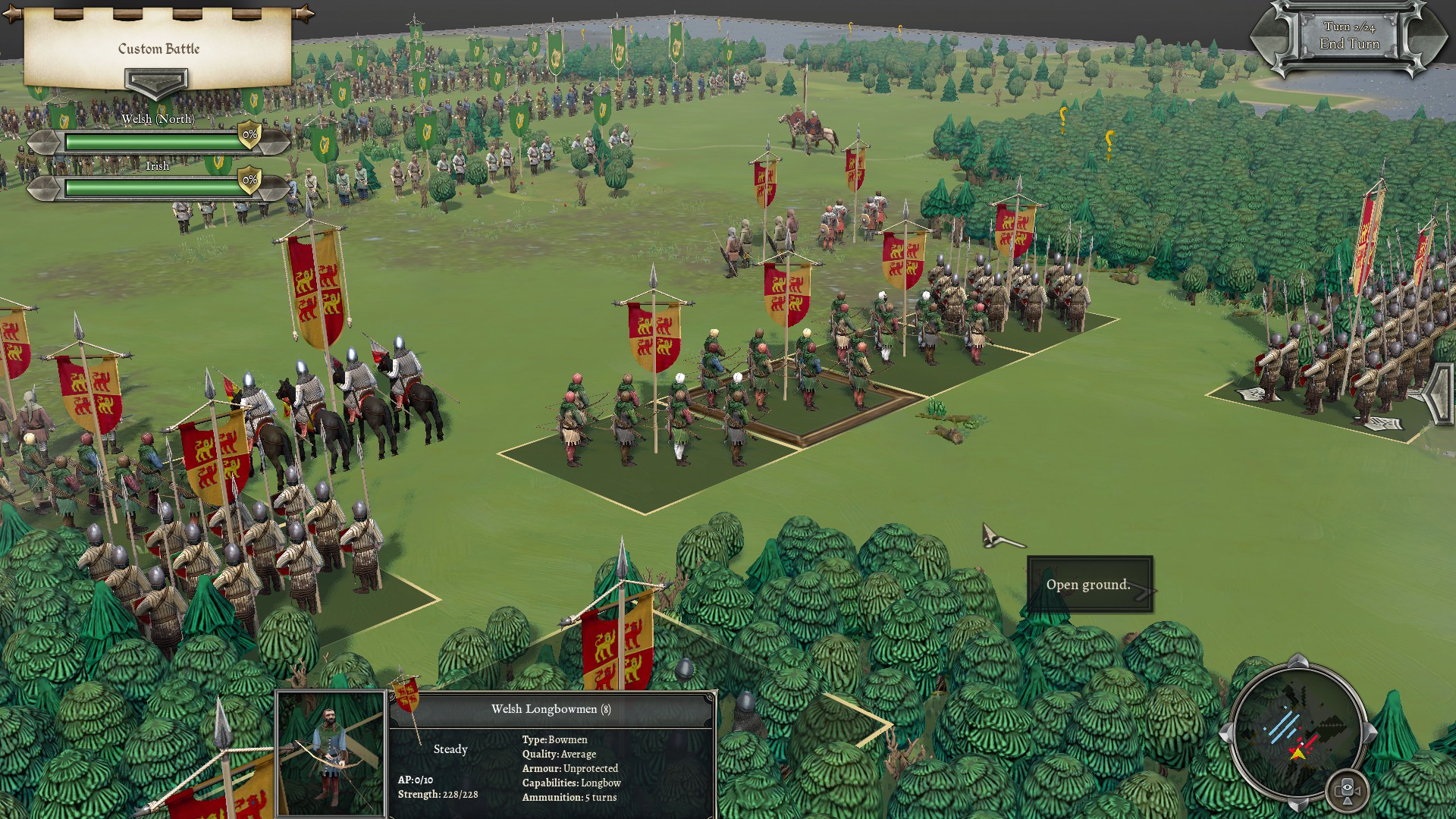
Routing rather than killing is really what the game is about. Each unit in your army consist of a large number of soldiers, often measured in the hundreds and you’re unlikely to be able to kill an entire unit of troops before they turn tail and run. This is a pretty realistic depiction. When losing combat, taking a good chunk of damage from ranged attacks or when seeing a friendly unit try to flee a unit has a chance of becoming more disorganized and more likely to flee in the future while also losing combat effectiveness and becoming more likely to lose future fights. Getting attack in the flank or rear is also something that troops find unnerving. Better quality troops do of course have a better chance of winning combat and are less likely to lose heart when things are starting to look a bit grim.
What takes a bit of getting used to is movement. You’re controlling large blocks of troops and they’re not agile. Simple acts like turning around can take an entire turn for most troops and even just turning a bit to the side can be a hassle. How much of a hassle depends on the troops, agile skirmishers can move quickly between troops and turn to face an enemy, while heavy spearmen are so cumbersome that if they end up in the wrong place and facing the wrong way it can take them a long time to get back into action. All of this means that you need to be thinking ahead and go in with a plan. Enemy units can also really restrict the movement of most non-light units. You can’t just run past an enemy, they’ll block movement for anyone trying to move through the squares that are in front of them.
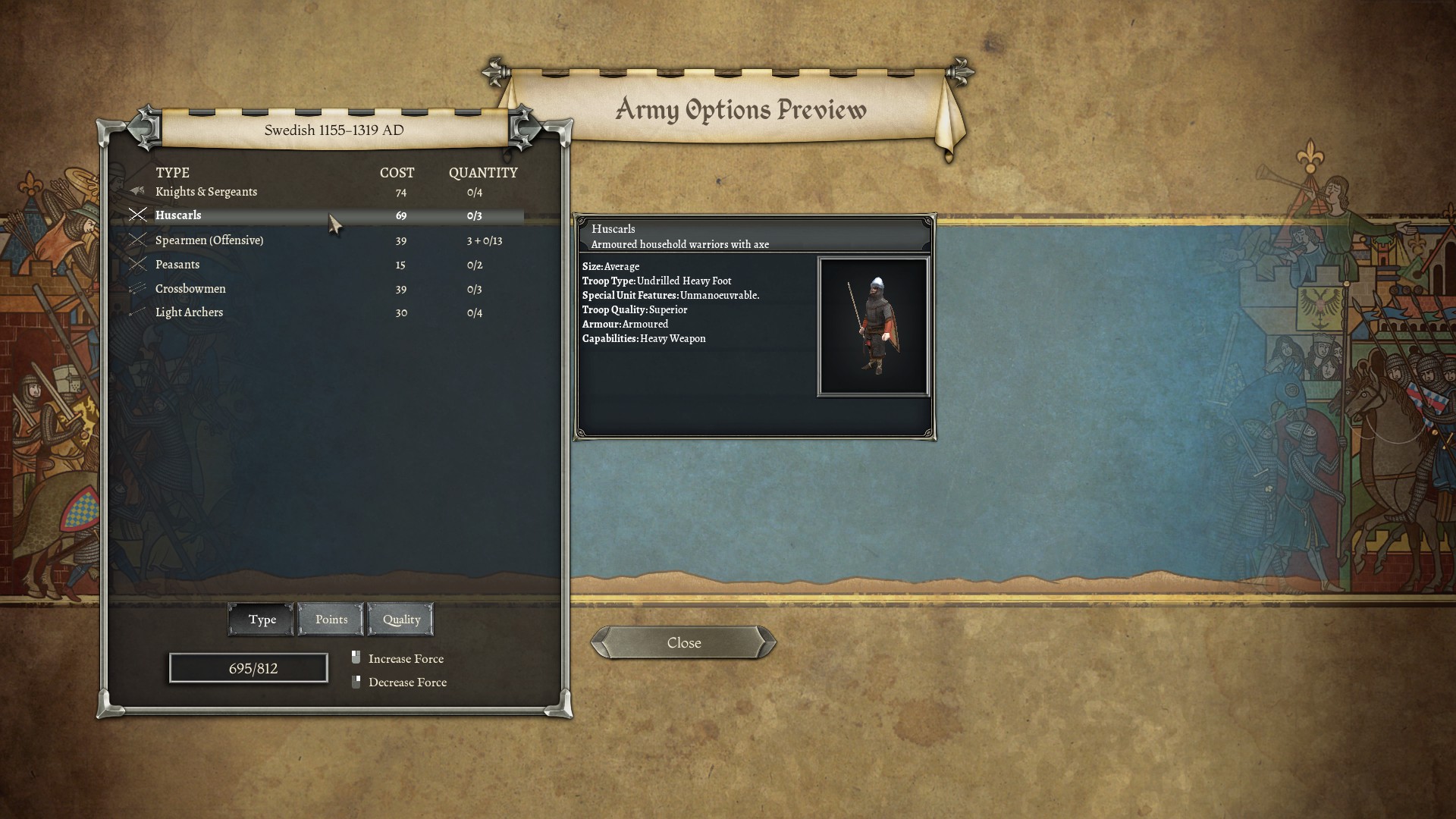
If a unit gets into close combat with another it will be locked in combat and there’s no way to get it out of there unless it or the enemy flees. When two evenly matched units meet in combat fights can take a while, with neither unit making much headway. Sooner or later one will lose some of its organization and then they’re more likely to take more losses and lose even more engagements in the future, but particularly with high quality troops you can’t expect either side to get the upper hand in a hurry. Instead you need to flank the enemy to break a stalemate, or use ranged units to soften them up, and disorganize them enough before going in for the kill.
Getting into the enemy flanks can be hard though, particularly for infantry, but even with cavalry it’s no cakewalk. But setting up flank attacks is also a key part of the game. How well can you hold the enemy troops in place, while setting up flank charges, and preventing the enemy from doing the same to do? A good flank charge can really decide the outcome of a battle as once one enemy decided to turn tail and run, other nearby enemy units might think the battle is lost and start thinking about fleeing and holes will start appearing in the enemy lines. But if you’re not careful your flanking unit might in turn open themselves up to a flank charge by an enemy.
When a unit flees anyone engaged in close combat with them tend to try and chase them down. This can be a really bad thing if your units get out of position and end up between two lines of enemy troops. Cavalry in particular tends to be quite eager to chase down fleeing enemies and might be out of action for several turns because they keep chasing the enemy. A crafty player can use this to their advantage by putting a cheap and disposable unit, like peasants, in front of a far more valuable cavalry unit. It’s always annoying to see your mighty Teutonic knights try and chase down some peasants instead of actually helping you win the battle.
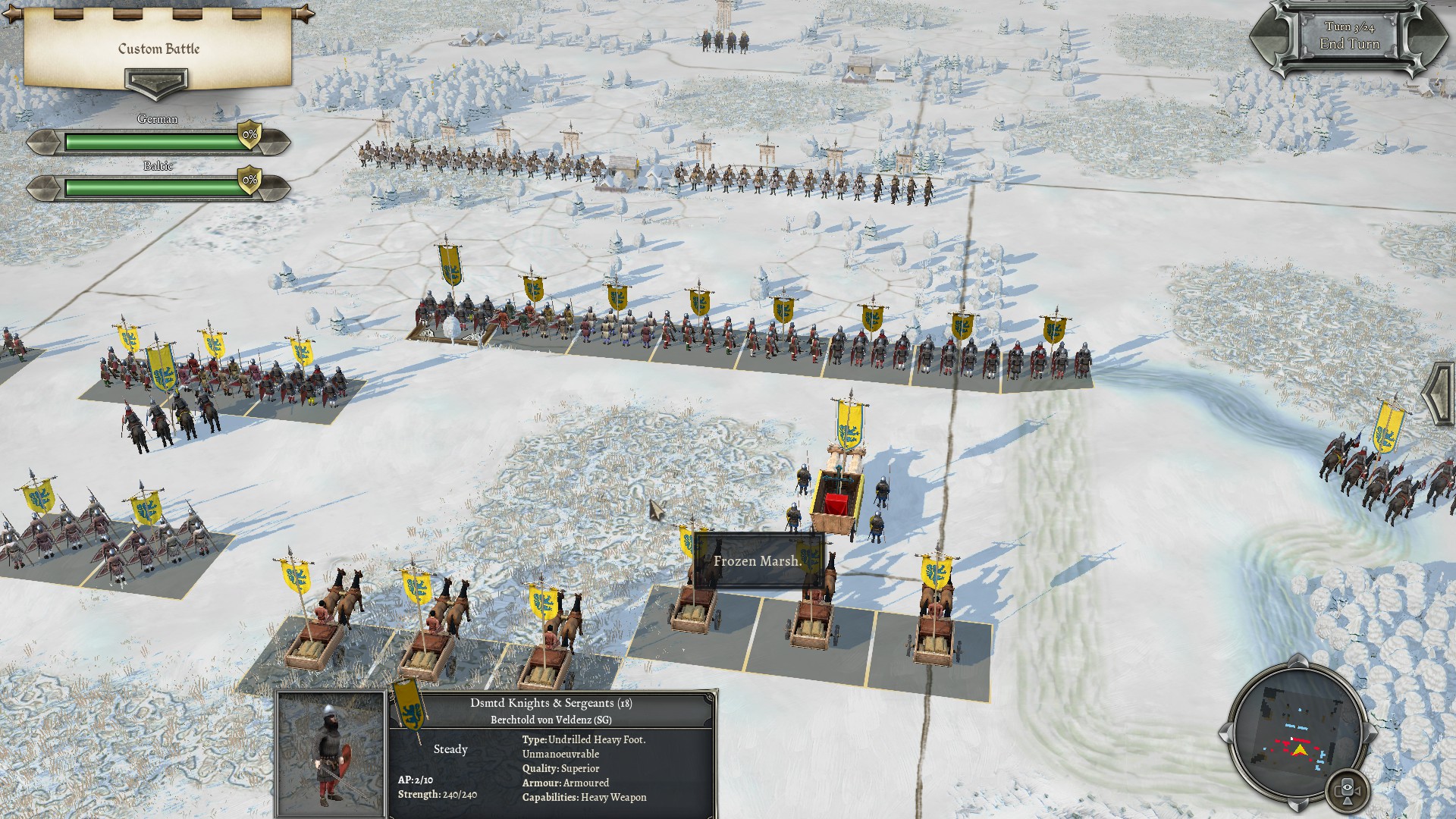
Not all units are big blocks of melee units though. Ranged units are also an important part of the game. These range from light cavalry archers to big blocks of crosbowmen and trebuchets. Ranged units are good at softening up the enemy and light troops, like light cavalry archers and skirmishers, are really hard to pin down, as they can move around enemies and tend to be able to avoid enemies trying to attack them. Light troops don’t do much when they charge an enemy’s flanks though, and they might in fact make matters even worse for you, as they’re usually pretty weak in close combat, and once they flee they might scare your own troops.
The unit rosters varies a lot between the different nations. The Mongols are of course almost entirely cavalry based, but lack the really heavy cavalry, Bohemia has a relatively balanced roster but can’t take too much of any one unit type, while the Teutonic knights have high quality troops but can’t field as many of them. Different nations have different strengths and because you can’t just spam one unit type for the most part you end up with relatively accurate rosters for each army that ends up feeling quite different. There’s of course some overlap between many of them, after all most nations still fielded somewhat similar troops, but the differences between the rosters can still result in vastly different play styles, and there’s also variants between similar troops, like Teutonic knights are a bit better than their French counterparts. They’re still used the same way, but if the two clash the difference becomes noticeable.
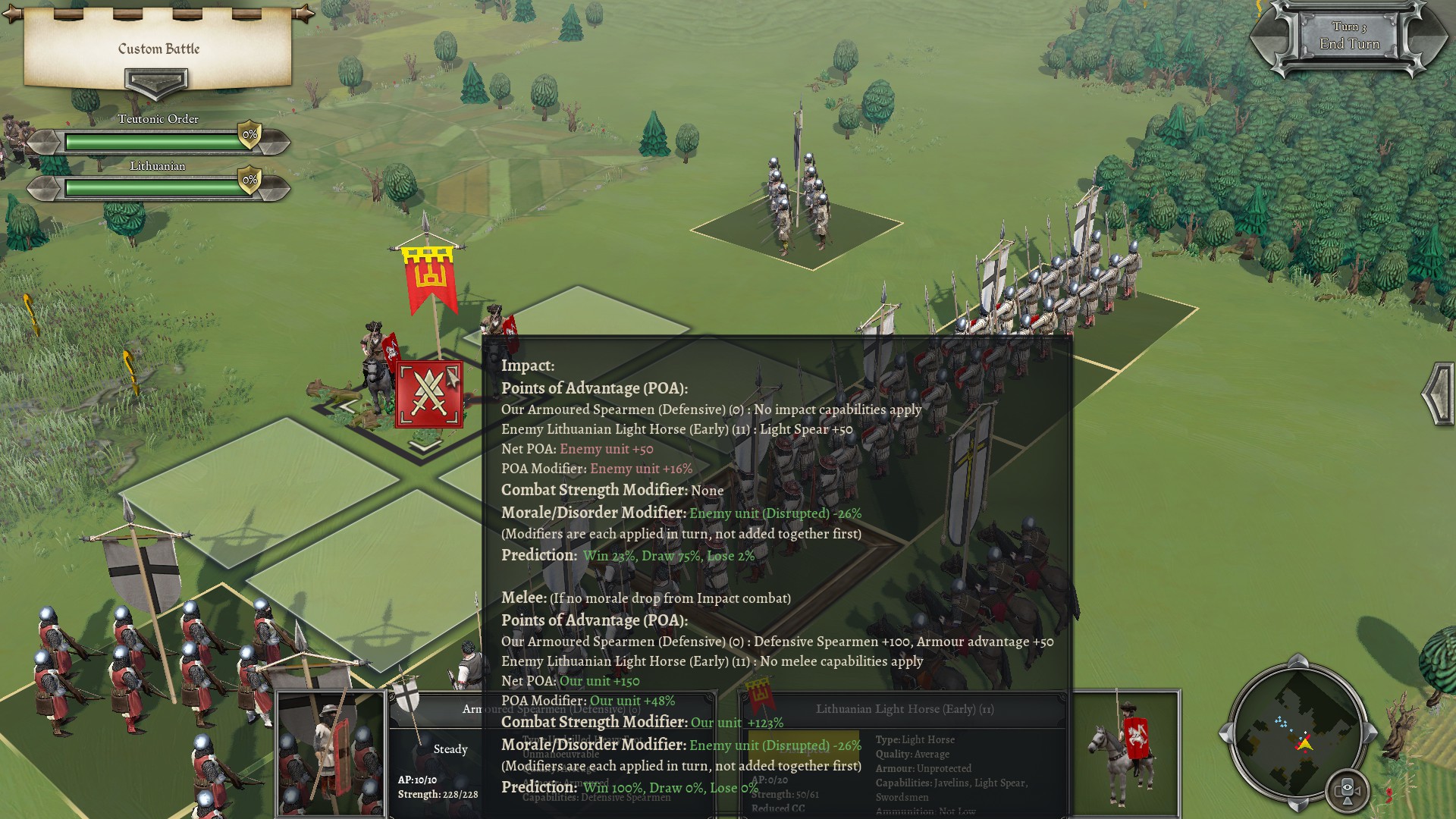
There are several different game modes in FoG 2: Medieval. The most basic one is quick battle, where the game will randomly generate a battle for you, based on some parameters that you’ve set. The armies will generally end up pretty balanced. Custom battle gives you more control over things, like exactly what forces you’ll bring with you, though the game will still have limitations in place on exactly what you can bring based on the faction you’re playing with caps on how many of any given unit you can bring with you. Then there are the campaigns, of which there are 4, plus the option for a custom campaign. Here you’ll play a series of linked battles and you’ll be able to carry over some of your forces between battles and make a few choices along the way on exactly what battles you want to play. And finally there are the historical battles where each side has a large pre-set army. You can chose to play as either side here, but don’t have any say over the exact army composition or deployment.
Multiplayer works similarly to single player, except for the obvious difference that you’re facing another human. A nice feature of the multiplayer mode is that you don’t need to even have the game running when the opponent is doing their turn, and you can do your turn when you have time to do so. You do your turn, submit it and then your opponent can do theirs once they’re available. It’s a standard PBEM system, but for a game like this it’s a nice fit.
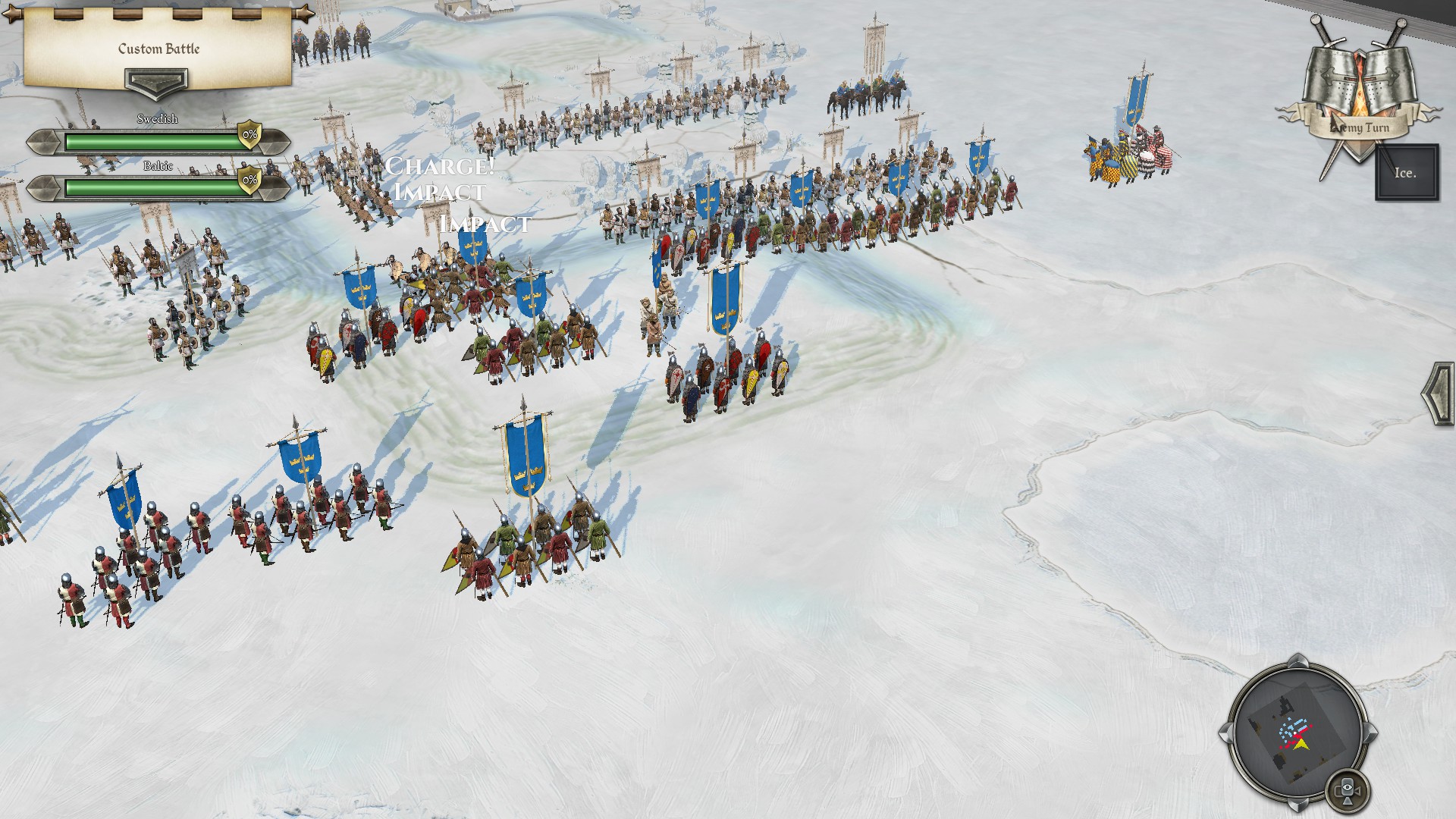
Closing Thoughts
Field of Glory 2: Medieval can feel a bit weird to play at first. Movement feels restricted, you’re not meant to really “kill” the enemy units, many of those things that decades of playing video games has taught you are pretty much just thrown out the window. It’s almost a bit frustrating at first. Basically, the game has a bit of a learning curve, particularly if you go in expecting things to work like in say the Total War series. But it’s worth sticking with FoG 2: Medieval during this initial learning hump as there’s a deep and rewarding tactics game underneath the initially obtuse seeming exterior.
Is the game worth getting though? I would say so. If you’re into tactics games and want something a bit more slow-paced, that requires thinking ahead a few turns and want a more realistic depiction of medieval warfare, then FoG 2: Medieval is well worth getting. If you’ve already played one of the past games that are based on the same rules, like Pike and Shot, Sengoku Jidai or the first Field of Glory 2, then you’ll have a good idea of how FoG 2: Medieval works as the games are very similar. There’s some differences, particularly when it comes to specific unit types and how they interact, after all knights were not really a thing 2000 years ago, but if you’ve played any of the previous games you’ll have a good idea of how this one works, and if you liked those then FoG 2: Medieval won’t disappoint.










